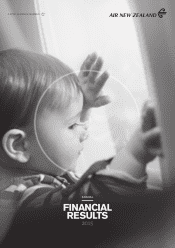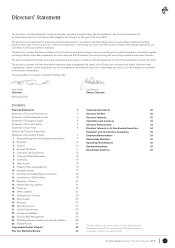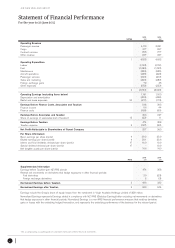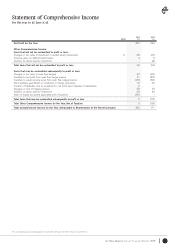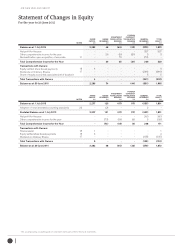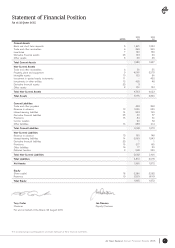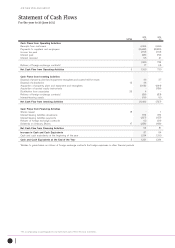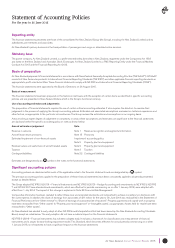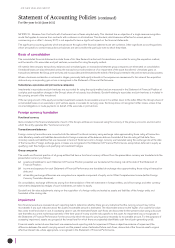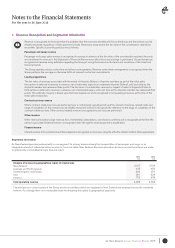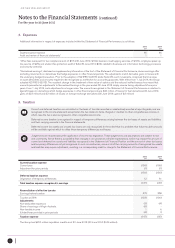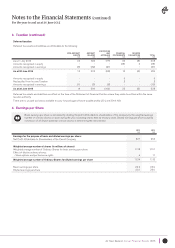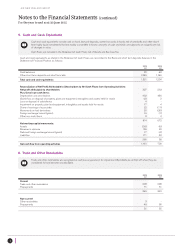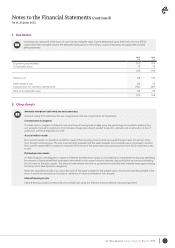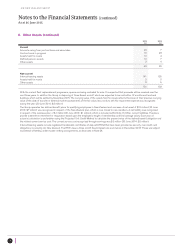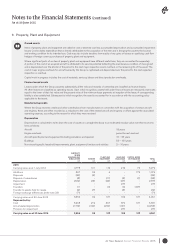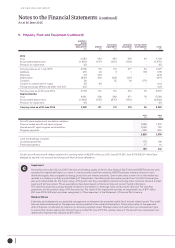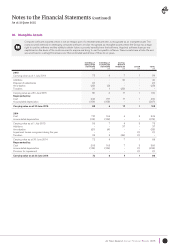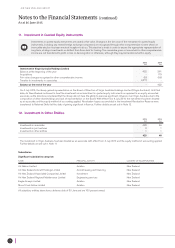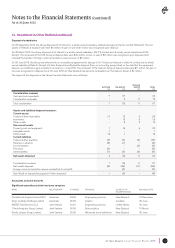Air New Zealand 2015 Annual Report Download - page 11
Download and view the complete annual report
Please find page 11 of the 2015 Air New Zealand annual report below. You can navigate through the pages in the report by either clicking on the pages listed below, or by using the keyword search tool below to find specific information within the annual report.
Notes to the Financial Statements
For the year to 30 June 2015
Air New Zealand Annual Financial Results 2015 9
1. Revenue Recognition and Segmental Information
Revenue is recognised to the extent that it is probable that the economic benefits will flow to the Group and the revenue can be
reliably measured, regardless of when payment is made. Revenue is measured at the fair value of the consideration received or
receivable. Specific accounting policies are as follows:
Passenger and cargo revenue
Passenger and cargo sales revenue is recognised in revenue in advance at the fair value of the consideration received. Amounts
are transferred to revenue in the Statement of Financial Performance when the actual carriage is performed. Unused tickets are
recognised as revenue using estimates regarding the timing of recognition based on the terms and conditions of the ticket and
historical trends.
The Group operates various code share and alliance arrangements. Revenue under these arrangements is recognised when the
Group performs the carriage or otherwise fulfils all relevant contractual commitments.
Loyalty programmes
The fair value of revenues associated with the award of Airpoints Dollars to Airpoints members as part of the initial sales
transaction is deferred to revenue in advance, net of estimated expiry (non-redeemed Airpoints Dollars), until such time as the
Airpoints member has redeemed their points. The fair value of consideration received in respect of sales of Airpoints Dollars to
third parties is deferred to revenue in advance, net of estimated expiry, until such time as the Airpoints member has redeemed their
points. The estimate of expiry is based upon historical experience and is recognised in net passenger revenue at the time of the
initial sales transaction.
Contract services revenue
Where contract related services are performed over a contractually agreed period, and the amount of revenue, related costs and
stage of completion of the contract can be reliably measured, revenue is recognised by reference to the stage of completion of the
contract at balance date. Other contract related revenue is recognised as services are performed.
Other revenue
Other revenue includes lounge revenue, Koru membership subscriptions, commissions and fees and is recognised at the time the
service is provided. Dividend revenue is recognised when the right to receive payment is established.
Finance income
Interest revenue from investments and fixed deposits is recognised as it accrues, using the effective interest method where appropriate.
Segmental information
Air New Zealand operates predominantly in one segment, its primary business being the transportation of passengers and cargo on an
integrated network of scheduled airline services to, from and within New Zealand. Resource allocation decisions across the network are made
to optimise the consolidated Group’s financial result.
2015
$M
2014
$M
Analysis of revenue by geographical region of original sale
New Zealand
Australia and Pacific Islands
United Kingdom and Europe
Asia
America
2,917
639
286
381
702
2,736
682
270
326
638
Total operating revenue 4,925 4,652
The principal non-current assets of the Group are the aircraft fleet which are registered in New Zealand and employed across the worldwide
network. Accordingly, there is no reasonable basis for allocating the assets to geographical segments.

